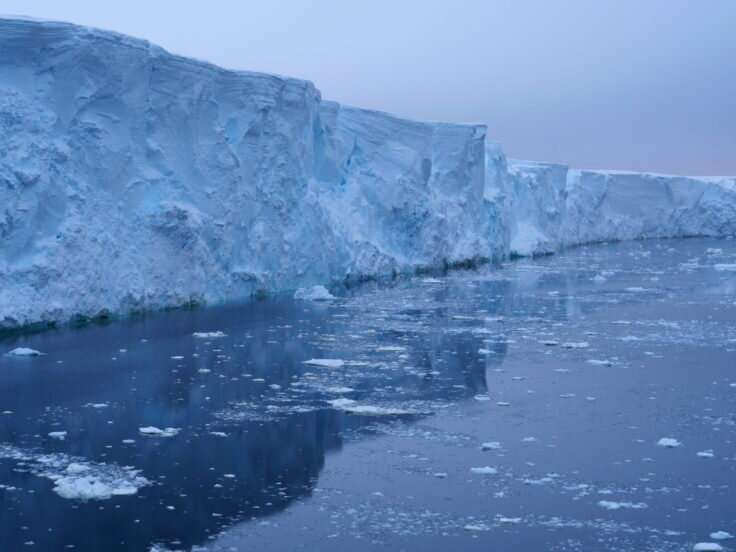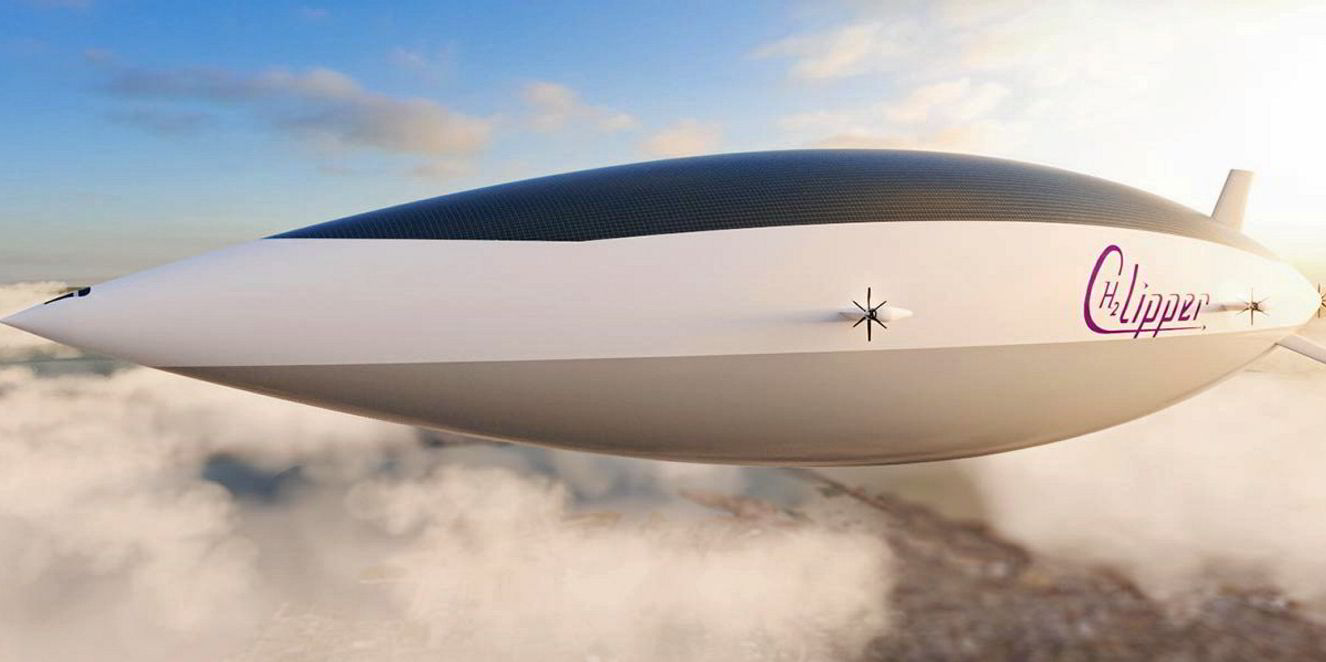The threat from Thwaites: The retreat of Antarctica's riskiest glacier

Antarctica's Thwaites Glacier is retreating rapidly as a warming ocean slowly erases its ice from below, leading to a faster flow, more fracturing and a threat of collapse, according to an international team of scientists. The glacier currently contributes four percent of annual global sea level rise. If it does collapse, global sea levels would rise by several feet—putting millions of people living in coastal locations in danger from extreme flooding.
Dr. Peter Davis, Physical Oceanographer at British Antarctic Survey (BAS), says: "Thwaites Glacier in West Antarctica is a river of ice the size of Great Britain that has been changing dramatically over the past 30 years. The speed at which it flows into the ocean has doubled, and there are fears that a complete collapse of the glacier could raise sea levels by over 60cm. Critically, the glacier is currently held back by an ice shelf, a floating extension of the glacier that is held in place by an underwater mountain.
Recent research as part of the International Thwaites Glacier Collaboration has shown that this ice shelf is under attack from all sides. It is being melted from below by warm ocean waters, causing it to lose its grip on the underwater mountain. At the same time, massive fractures are forming and growing across the ice shelf surface. The research suggests that at the current rate of change, this critical ice shelf will begin to break apart within the next two decades, with severe consequences for the stability of Thwaites Glacier and ultimately sea level here in the UK."

The International Thwaites Glacier Collaboration is a collaboration between UK and US scientists, involving over 60 scientists and students. This five year project is aimed at collecting instrument data throughout the glacier and the adjacent ocean, and modeling ice flow and the future of the ice sheet. Their work has revealed major changes in the ice, the surrounding water and the area where it floats of the bedrock below. The ITGC It is one of BAS' flagship projects and several of our science and support staff are currently being deployed for the start of the 2021–2022 field research season.
Thwaites sits in West Antarctica, flowing across a 120km stretch of frozen coastline. A third of the glacier flows more slowly than the rest—it's braced by a floating ice shelf which prevents faster flow of the upstream ice. But the brace of ice slowing Thwaites won't last for long, said Erin Petitt, an associate professor at Oregon State University. Beneath the surface, warmer ocean water circulating beneath the floating eastern side is melting the ice directly from beneath. This floating extension of the Thwaites Glacier will likely only survive a few more years.
Peter Davis, whose team use hot water to drill access holes from the surface of the ice shelf to the ocean cavity hundreds of meters below, adds: "Warm water is also a threat for the so-called 'grounding zone,' the area where the glacier lifts off the seabed. The ocean waters in the grounding zone are warm, by polar standards, and salty, and this generates prime conditions for melting the ice shelf from beneath."
Peter Washam, a research associate at Cornell University, also studies the grounding zone. His team lowered a remote-controlled underwater robot through the borehole to take measurements of the ocean, ice and seafloor in this region. They mapped these properties up to the point where the ice and seafloor came in contact. Washam describes the grounding zone as "chaotic," with warm water, rugged ice, and a steep, sloping bottom that allows the water to quickly melt the ice sheet from below.
Upstream of here, researchers have found that water is pumped under the ice sheet by tides. Lizzy Clyne, an adjunct professor at Lewis and Clark College, and their team study the tidal pumping mechanism that physically forces warm water between the ice and bedrock at Thwaites. The floating portion of the glacier rises and falls with the tides—and that motion acts like a lever, pumping water under the ice sheet. Also, downstream of the grounding zone on the bottom of the floating ice shelf, constant stretching and melting is rapidly creating long channels through the ice where water can flow, impacting the long term stability of the ice shelf, said Clyne.
As Thwaites retreats upstream and into the ice sheet, it may form very tall ice cliffs at the ocean front. Anna Crawford, a postdoctoral researcher at the University of St. Andrews, and her team use computer modeling to study ice cliff failure: a process by which ice can break off the ends of the glacier into the open ocean. The process can take on many forms, but all of them could lead to very rapid retreat of the massive glacier. The bedrock shape of West Antarctica makes the region vulnerable to rapid retreat via ice-cliff failure, as increasingly tall cliffs could be exposed as the ice retreats. This could lead to a chain-reaction of fracturing, resulting in collapse, said Crawford. A challenge for the team is assessing if, when, and how fast this might occur, but major ice loss is possible within several decades to a few centuries.

Ted Scambos, a senior research scientist at the Cooperative Institute for Research in Environmental Sciences (CIRES) says: "If Thwaites were to collapse, it would drag most of West Antarctica's ice with it, so its critical to get a clearer picture of how the glacier will behave over the next 100 years. "
ITGC research, including future sea-level projections, will be vital for policy makers in their efforts to mitigate and adapt to the impacts of global sea level rise.Scientists find record warm water in Antarctica, pointing to cause behind troubling glacier melt
More information: For more information, see thwaitesglacier.org/






















